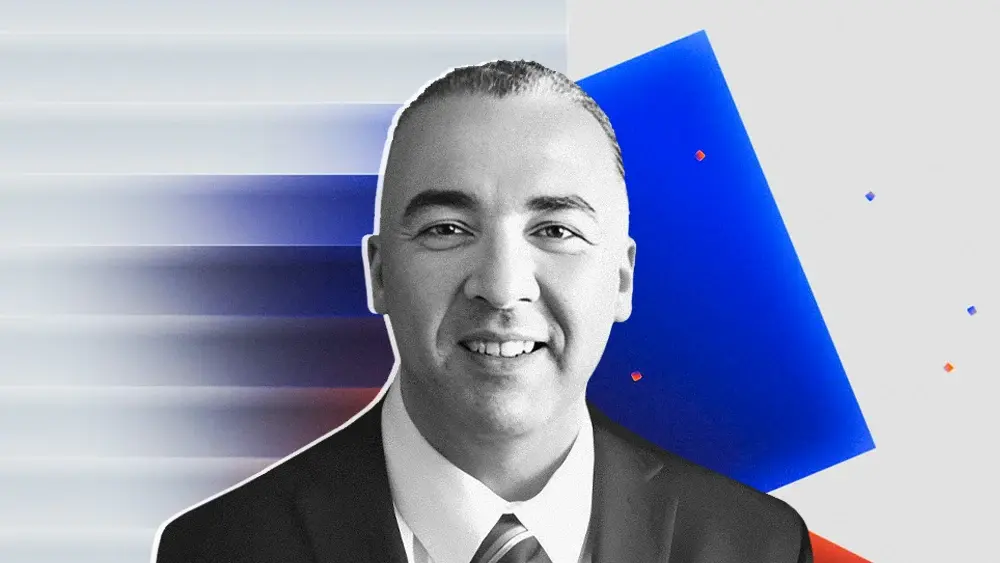
Key Points
CIO News spoke with Mo Jamous, CIO for Consumer & Business Banking at U.S. Bank, about the need for flexible agentic AI strategies.
Jamous advocated for "persona-based productivity," focusing on automating both technical and non-coding tasks to enhance efficiency across complex enterprise organizations.
He said a modular architecture with abstraction layers is key to integrating new and old technologies seamlessly.
Jamous said responsible AI use requires cultural change and training across organizations, expanding on a recent essay he wrote on Medium.
Generative AI has thrust technology leaders into a strategic paradox. On one side, there is immense pressure to deploy intelligent systems, chase massive productivity gains, and secure a competitive edge. On the other, the challenges posed by decades-old legacy systems and compounding technical debt make any new bet risky.
Every innovative technical leader shares a nagging fear that they are behind the adoption curve. That self-critical leadership characteristic drives advancement, and it's needed now more than ever. But the search for a single, perfect enterprise AI playbook is elusive. The best leaders lean into the reality that a silver bullet might not exist, and they guide their organizations accordingly.
We spoke with Mo Jamous, CIO for Consumer & Business Banking at U.S. Bank, who is responsible for serving the bank's 15+ million customers. His leadership helped propel U.S. Bank's mobile app to a #1 ranking in multiple surveys. Jamous argued that in an era of unprecedented change, the most dangerous strategy is clinging to a single, rigid solution.
A pragmatic playbook: Jamous' core philosophy is a dose of reality that rejects technological dogmatism. "When you have a large bank, you're never going to have one homogeneous solution," he said. To believe you can standardize on a single agentic framework, he explained, is like trying to run an entire enterprise on just one SaaS product.
The 'Internet of Agents': This flexibility isn’t just a preference; it’s a necessity for the future he sees coming. Jamous is preparing for what he called the "Internet of agents," where potentially millions of automated agents are woven into the fabric of the enterprise. This vision reframes the current AI challenge entirely. "Creating agents is easy," he noted. "But managing agents is where I believe the industry is still lacking." The real work isn't just invention; it's building the governance and discoverability layers to manage this sprawling new reality at scale.
Instead of chasing high-risk, customer-facing AI, Jamous' strategy is grounded in "persona-based productivity." His teams are building agentic tools that target the entire product development lifecycle, not just the obvious task of writing code.
Coding is only 30%: "There are a lot of things that a developer does outside of just coding," he explained. "Coding is only 30%." His focus is on the other 70%, which involves automating vulnerability management, peer code reviews, and testing. This is an enterprise-wide framework, targeting everyone from product managers working in Jira and designers in Figma to mortgage loan officers, branch bankers, and risk and compliance teams, all with the goal of helping the bank produce software "faster, cheaper, and with better quality."

This focused, internal strategy is a direct response to the immense pressures on modern CIOs. "The ground started to shift from underneath us," Jamous said of the post-GenAI world. "It's been a monumental change that is fascinating to watch, but at the same time, it comes with a lot of uncertainty." He described a three-front war: the mandate to use AI for business growth and security, the requirement to deliver on all existing priorities, and the unending need to modernize legacy systems. This is amplified by the "extreme" pace of innovation, which makes any large capital investment a risky bet against obsolescence. His solution is to build a modular architecture with flexible "abstraction layers" that can plug into any solution, whether built or bought.
Where old meets new: This architectural pragmatism extends to the bank’s oldest technology. After decades of failed "rip-and-replace" projects across the industry, Jamous is focused on a place "where the new and old meets the new in a very intelligent way."
Agents bridge generational gaps: The goal, he said, is "making those two systems talk together in a way that is not really very intrusive." For example, a large withdrawal logged in a 40-year-old mainframe system can now trigger a modern AI agent to immediately execute a customer retention strategy, creating a seamless bridge between two vastly different technological eras.
Ultimately, navigating these complexities comes down to a core leadership principle that answers the central question of how to move fast without breaking things. The solution is not a piece of technology, but a cultural foundation. "Engaging in responsible AI is the responsibility of every leader," Jamous said, referencing a recent essay he wrote on Medium. "Making sure that everyone in the organization that has access to AI is being trained on those core principles is super critical to be able to democratize AI and run it at scale."
*All opinions expressed in this piece are those of Mo Jamous, and do not necessarily reflect the views of his employer.
.svg)

.webp)



